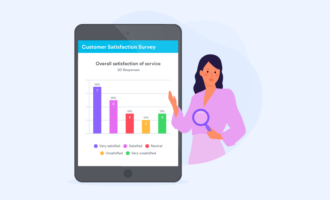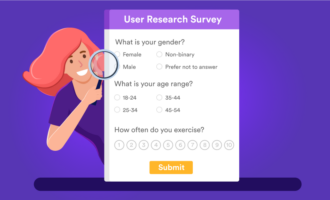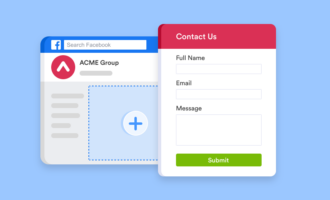Surveying your clients can reveal how people view your business and show you ways to improve. Including demographic questions in your surveys can tell you why customers see you the way they do. These questions can also indicate trends in thinking and behavior.
Examining demographics reveals more than if you simply read the participants’ opinions and beliefs. Demographic information provides context. By asking the right demographic questions, you may get insights into why different members of the audience hold certain opinions or why their experience of a product or service differs. Let’s look at some basic demographic questions you can use in your next survey.
Age, gender, and other foundational information
Even the most basic information about people can help you understand who they are and what their experiences in life have been. But tread carefully. Some of these subjects are sensitive. Ask only for the information you need, and phrase things carefully. A slight change in wording can make someone uncomfortable enough to leave your survey.
Here are some basic questions you can include on your survey:
- What’s your age? You can use a text box where people input their age or year of birth. Or you can list age ranges for people to choose from.
- What gender do you identify as? This question should be phrased carefully. Consider giving people the option to write a short answer in their own words. For instance, you could use a list like this:
- Female
- Male
- Nonbinary
- Other (Include a text box for responses.)
- Prefer not to answer
- What is your ethnicity? Ethnicity — the cultural background in which someone was raised — can be a tricky subject. Allow people to select multiple options or write a short answer so that everyone feels included.
- Are you of Hispanic, Latino, or Spanish origin? Asking this question along with the preceding question gives the person an additional way to self-identify and can give you additional context.
- What language(s) do you speak at home? You may have a strong international user base that you don’t even know about. Or your clients may speak a second language and would appreciate having content in that language.
Going back to basics allows you to get a good picture of who’s taking your survey and what their background is. But another important aspect of getting to know your audience is where they live.
Location, location, location
Where people live can also have an impact on the way they think and behave. These circumstances can also influence the types of products and services they are interested in.
For example, you might infer that someone who lives in an urban area with a strong transportation infrastructure would be more likely to use public transport than someone who lives 20 miles outside of that same city.
Here are some basic location-based question to ask:
- What country do you live in? If you are surveying people around the world, you’ll want to include this question to have geographic context for their responses. Consider providing a list of countries they can choose from.
- What state or province do you live in? Narrowing down respondents’ geographic regions may be helpful for understanding their attitudes or potential interest in your product or services.
- What city do you live in? Delving further into their location can net you important geographic context.
- What is your home ZIP code? Segmenting users by ZIP code can help you compare responses against existing information about income levels and other demographics for that area.
- Do you live in a rural, suburban, or urban area? The type of environment and community in which someone lives may influence their viewpoints.
Life at home
What goes on in someone’s home life has a huge impact on their day-to-day life. From how much they can afford to splurge on something to who they have to think about when they make decisions, these details can give you insight into their concerns.
- What’s your current relationship status? Be sure to include all types of relationships, such as
- Married
- In a domestic partnership
- Widowed
- Divorced
- Separated
- Single/never married
- What’s your household income? Giving respondents the option to choose from a set of salary ranges can help you analyze responses more easily.
- Do you have any children or dependents? You can provide yes and no answer options, along with a follow-up text entry box where respondents can list more information, such as the number of children they have, if they want.
Education and employment
Knowing what career stage someone is in can indicate how much control they have over purchasing a product or service. In contrast, learning how much education your average user has gives you a better understanding of how you can tailor your content to your audience.
- What level of education do you have? Make sure to include options such as “currently a student.”
- What is your current employment status? Your list of answers could look something like this:
- Working full time (35 hours or more a week)
- Working part time
- Unemployed but looking for opportunities
- Unemployed and not looking for offers
- Unable to work
- Retired
- Student
Gathering this data provides insight into what kind of people are interested in your products and whether they have the power to buy them for their entire company.
Create a survey with Jotform in just a few minutes
Jotform is a powerful online form builder with over 900 survey templates to help you get started on learning about your audience. You can easily customize a survey using the drag-and-drop interface — add or change questions, add useful survey elements like widgets, and alter the look and feel to match your organization’s branding.
Take this demographic survey template, for example. It already includes several questions about the topics mentioned above, such as gender, age, ethnicity, location, education, household income, and more. If you want to survey your customers, you can start with this template and add questions about your products and services. Then just share it with your target audience, and manage submissions in Jotform Tables as you receive them.








































































































Send Comment: